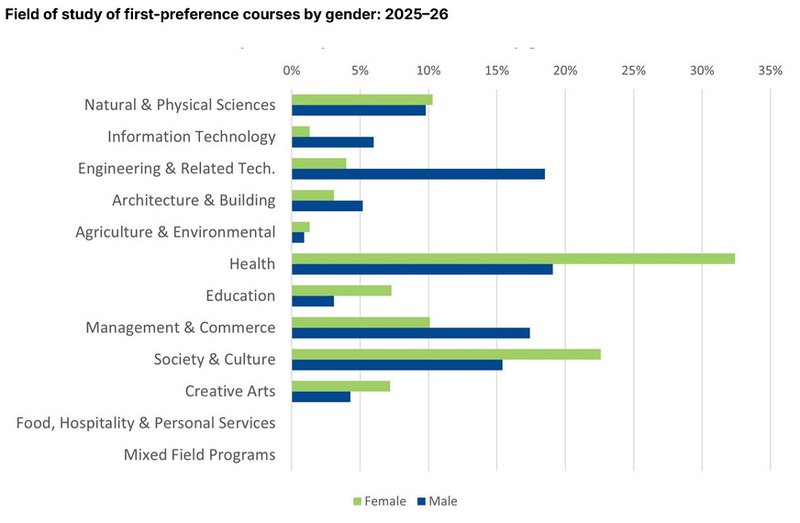
Domestic applications are on the rise, but major challenges in student preference, participation and gender representation lurk beneath the surface.
In NSW, the Universities Admissions Centre (UAC) has reported a 6.4% increase in undergraduate applications, with 49,800 year 12 students and 18,800 non year 12 applicants seeking university places in 2026.
Just over 83% of non Year 12 applicants were 24 years old and under.
Health remained the most popular subjects for year 12 applicants, followed Cosley by society and culture, with both attracting more than 20% of the market. In contrast, Health was far more popular for non-school leavers, attracting almost 35% of applicants, compared to just over 16% for the next most popular category, society and culture.
Earlier this year QTAC reported a 4% increase in applications, including a 5.9% boost among year 12 students and 2% rise in non Year 12 applicants.
With only 48% of undergraduate commencements being school leavers in 2024 and a range of pathways in play, figures from the admission centres offer just one perspective on enrolment trends, albeit a very significant one.
National figures for 2024 enrolments, released last month indicated a 4.3% increase in domestic commencements over the previous year – including a 3% rise in undergraduate commencements and a 32% jump in postgraduate course entrants.
However, a range of issues arise in the underlying details of the enrolment statistics.
The UAC data shows little change in the gender split of applicants, with 57% of year 12 and 56% of non year 12 applicants being female.
Traditional gender preferences for subjects persist, with 32% of female applicants selecting health compared to 19% of males, and 18% of male students donning the flannelette shirt as they apply for an engineering course compared to 4% of female applicants.
The Commonwealth’s data indicated a persistent under-representation of male students in higher education, with the proportion of female students rising from 58% in 2015 to 62% in 2024 – with male enrolments growing at a significantly slower rate post-COVID.
Participation in university programs peaked at 44% for 19 year-olds during COVID, with fewer work opportunities encouraging students to pursue a degree and had returned to just over 40% in 2024, according to indicative trends reported by the Department of Education.
Major structural reform in HE and VET is urgently required if the Government is to set the foundations for achieving the Accord’s goal of 4 in 5 workers being tertiary educated by 2050.
